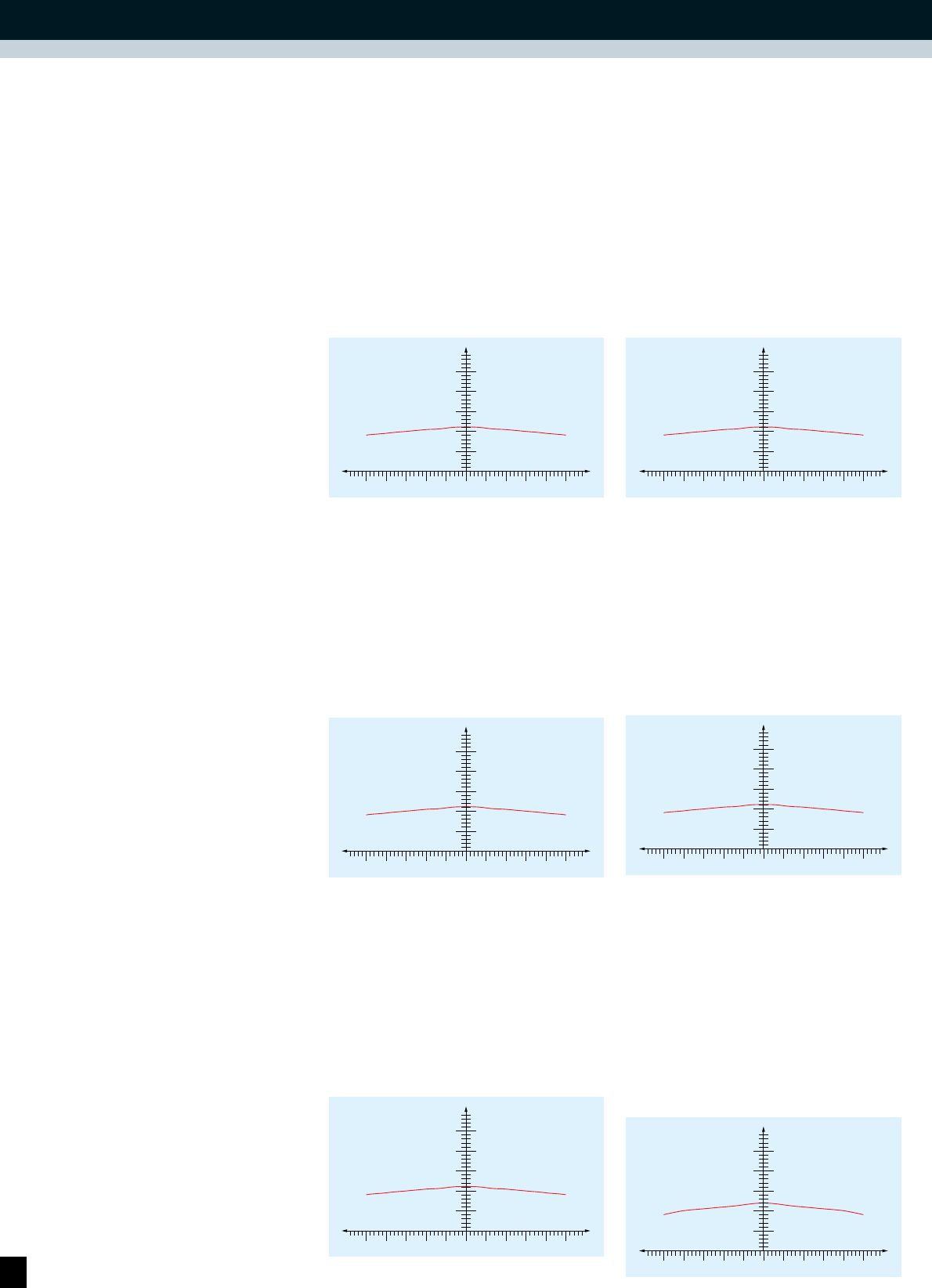
AlphaLux
Characteristics:
■ Gain 1.1
■ Viewing angle 120°
■ Weight/m
2
360 g
■ Screen thickness 0.28 mm
Used for:
Tripod Alpha, Cinemobil and spring roller
SilverLux
Characteristics:
■ Gain 1.1
■ Viewing angle 120°
■ Weight/m
2
360 g
■ Screen thickness 0.28 mm
Used for:
Tripod Alpha SilverLux
TwinLux
Characteristics:
■ Gain 1.1
■ Viewing angle 120°
■ Weight/m
2
360 g
■ Screen thickness 0.28 mm
Used for:
Tripod Alpha TwinLux
GammaLux
Characteristics:
■ Gain 1.1
■ Viewing angle 120°
■ Weight/m
2
380 g
■ Screen thickness 0.30 mm
Used for: Ultra-portable table screen
and portable floor screen
SuperLux
Characteristics:
■ Gain 1.1
■ Viewing angle 120°
■ Weight/m
2
580 g
■ Screen thickness 0.43 mm
Used for: Tripod, self-locking roller Starlight or
electric Starlight
UltraLux
Characteristics:
■ Gain 1.2
■ Viewing angle 120°
■ Weight/m
2
570 g
■ Screen thickness 0.43 mm
■ Fire protection class M1
Used for: Landscape formats, tripod, self-locking
roller Silverline or electric Silverline
REFLECTA SCREEN FABRIC TERMINOLOGY
SCREEN KNOW-HOW
The fabric types
A projection screen does not only refract the pro-
jected light, but also distributes it with a single
goal: send as much light as possible into the
direction of the audience.
There are two types of projection screens:
■ Diffuse
■ Reflective
Gain
The reflection properties of a screen are defined
by the gain or luminance factor. This factor
informs you of the luminance of the respective
projection screen in comparison to a surface that
is standard white-coated. The factor expresses
how many times lighter the picture is seen by the
viewer. The larger the gain factor of a screen, the
smaller the viewing angle. Typically, the specified
gain factor indicates the maximum reflection of a
screen along the projection axis. Special coatings
of the projection screens are used to obtain diffe-
rent reflection characteristics. Their effect is to
manipulate the light reflection, i.e. either distri-
buted evenly in all directions or concentrated to a
small viewing angle.
0,5
1,0
1,5
2,0
2,5
10°0° 20° 30° 40° 50°
Gain 1,1
-10°-20°-30°-40°-50°
0,5
1,0
1,5
2,0
2,5
10°0° 20° 30° 40° 50°
Gain 1,1
-10°-20°-30°-40°-50°
0,5
1,0
1,5
2,0
2,5
10°0° 20° 30° 40° 50°
Gain 1,1
-10°-20°-30°-40°-50°
0,5
1,0
1,5
2,0
2,5
10°0° 20° 30° 40° 50°
Gain 1,1
-10°-20°-30°-40°-50°
0,5
1,0
1,5
2,0
2,5
10°0° 20° 30° 40° 50°
Gain 1,1
-10°-20°-30°-40°-50°
0,5
1,0
1,5
2,0
2,5
10°0° 20° 30° 40° 50°
Gain 1,2
-10°-20°-30°-40°-50°
8


















